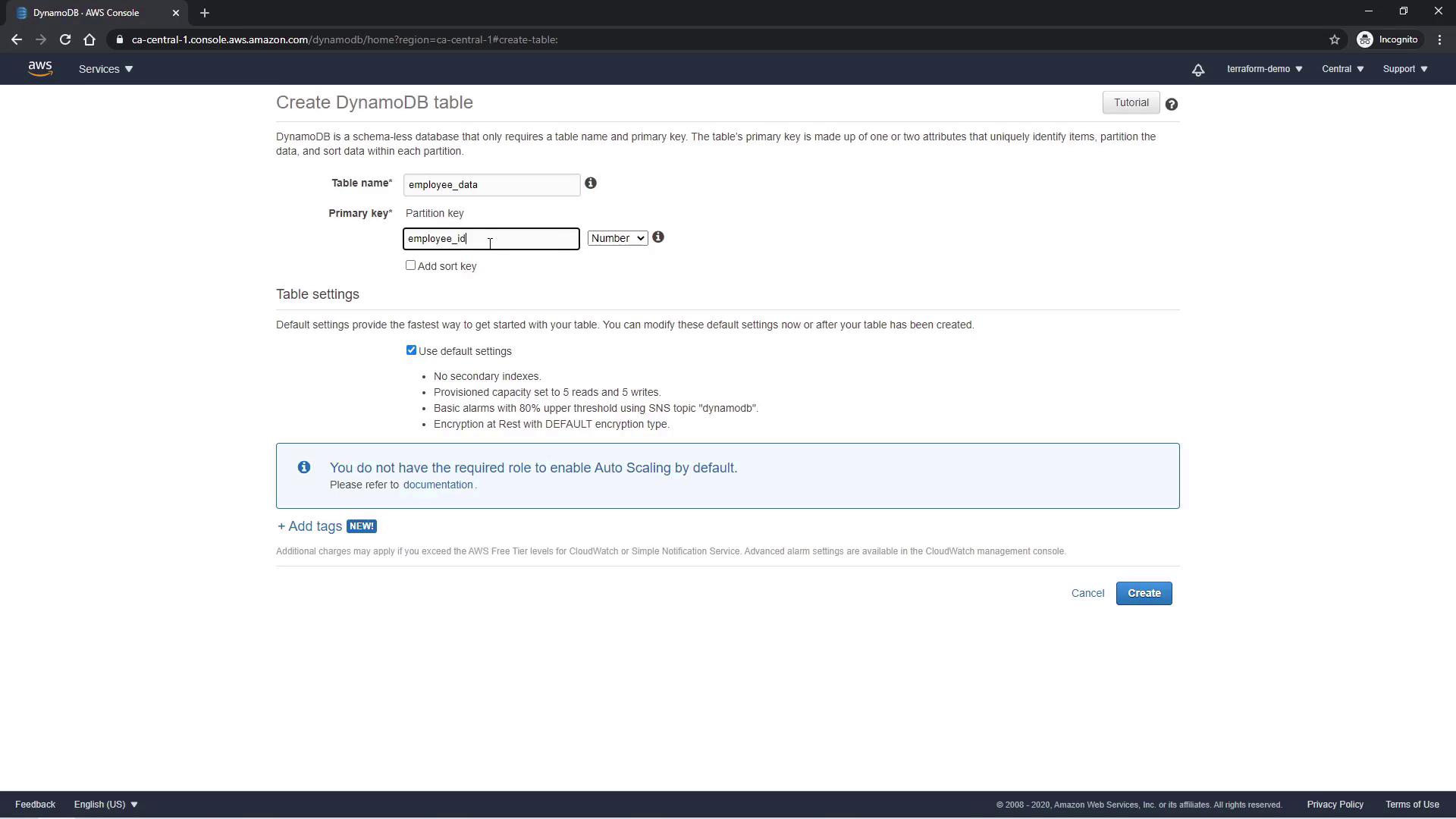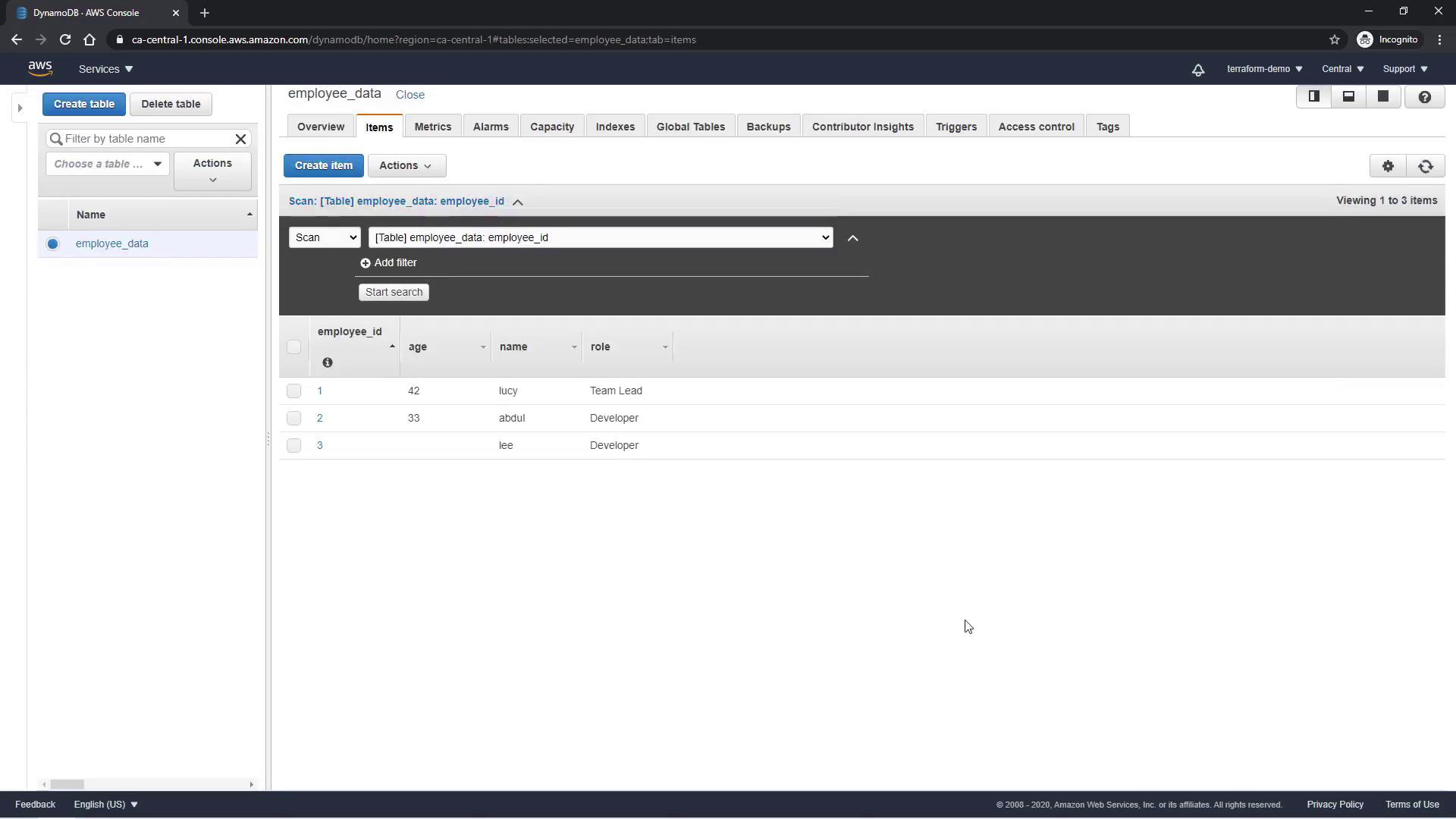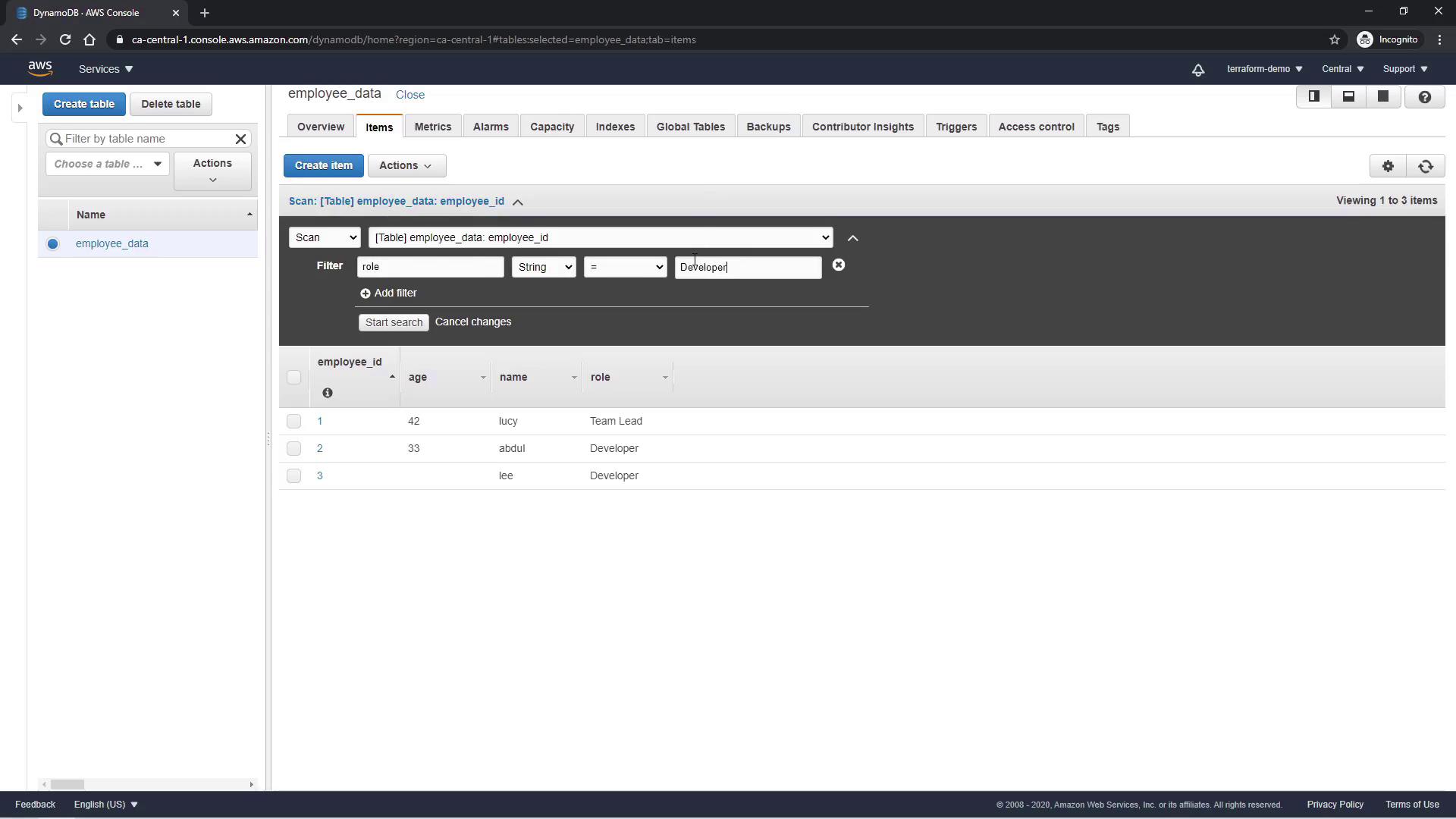Terraform Basics Training Course
Terraform with AWS
Demo Dynamodb
This guide demonstrates how to create and manage a DynamoDB table using the AWS Management Console. We'll walk through accessing DynamoDB, creating a table to store employee data, adding items, and filtering results efficiently.
Accessing DynamoDB
- Click on the Services tab in the top left corner.
- Under Databases, select DynamoDB.
- Click the Create Table button.
Creating a Table
To get started, provide a table name to store employee information. In this example, name the table employee_data. Next, specify the primary key (hash key) by using employee_id with the data type set to Number.
Leave the other settings at their default values and click the Create button.

After a few seconds, the table is created and its name appears in the left sidebar. Click on the Items tab to view the table contents (initially, there are no items).
Adding Items
Next, add items to the employee_data table:
- Click on the Create Item tab. The employee_id field (the primary key) is already populated.
- Modify the employee_id to
1. - Click the Append button to add additional attributes:
- name (String) for the employee's name.
- age (Number) for the employee's age.
- role (String) for the employee's role.
After adding the necessary details, click Save. The created item will include an employee_id of 1 along with the corresponding attributes. Below is a sample JSON representation:
{
"employee_id": 1,
"name": "lucy",
"age": 42,
"role": "team lead"
}
You can similarly insert more items. For instance, to add details for another user named Lee, use the following input:
{
"employee_id": 2,
"name": "abdul",
"age": 33
}
Note
In DynamoDB, only the primary key is required when inserting items; all other attributes are optional. This allows flexibility when modeling your data.

Filtering Items
To easily locate specific items, you can apply filters to the table. For example, to list all employees with the role of "Developer", apply a filter using the role attribute.

Next Steps
This concludes the demo on how to create and manage a DynamoDB table using the AWS Management Console. In forthcoming tutorials, we will explore how to create DynamoDB tables using Terraform for automated infrastructure management.
For additional information on AWS and DynamoDB, consider visiting:
Enhance your cloud solutions by exploring these resources and leveraging AWS services in your infrastructure projects.
Watch Video
Watch video content